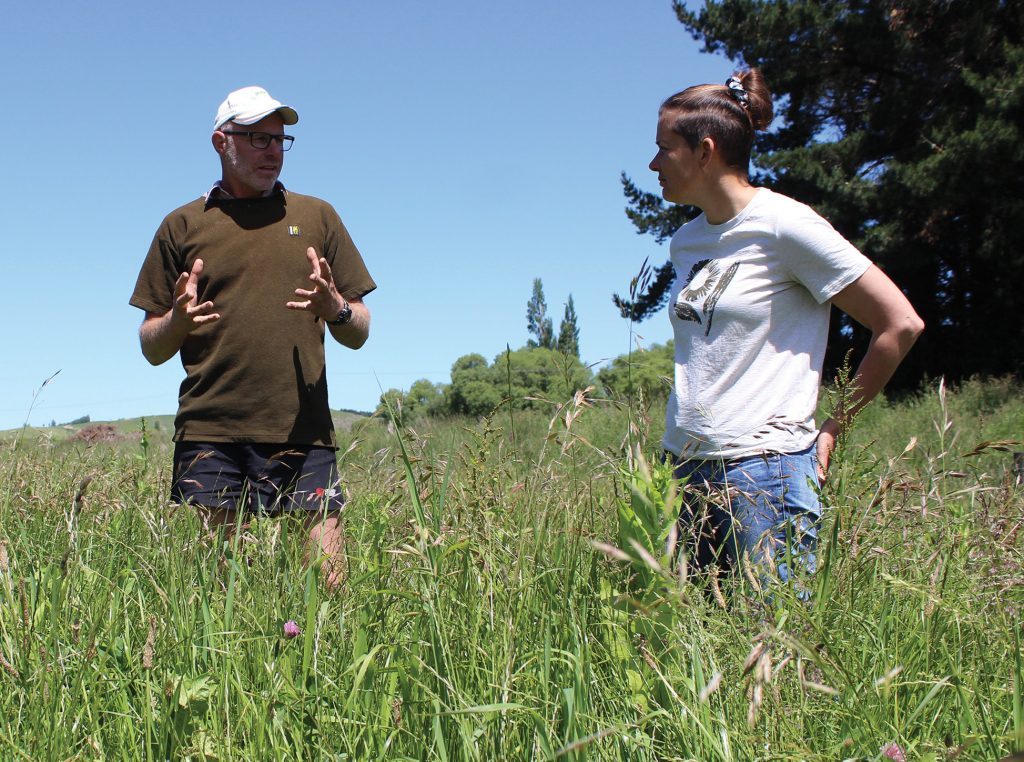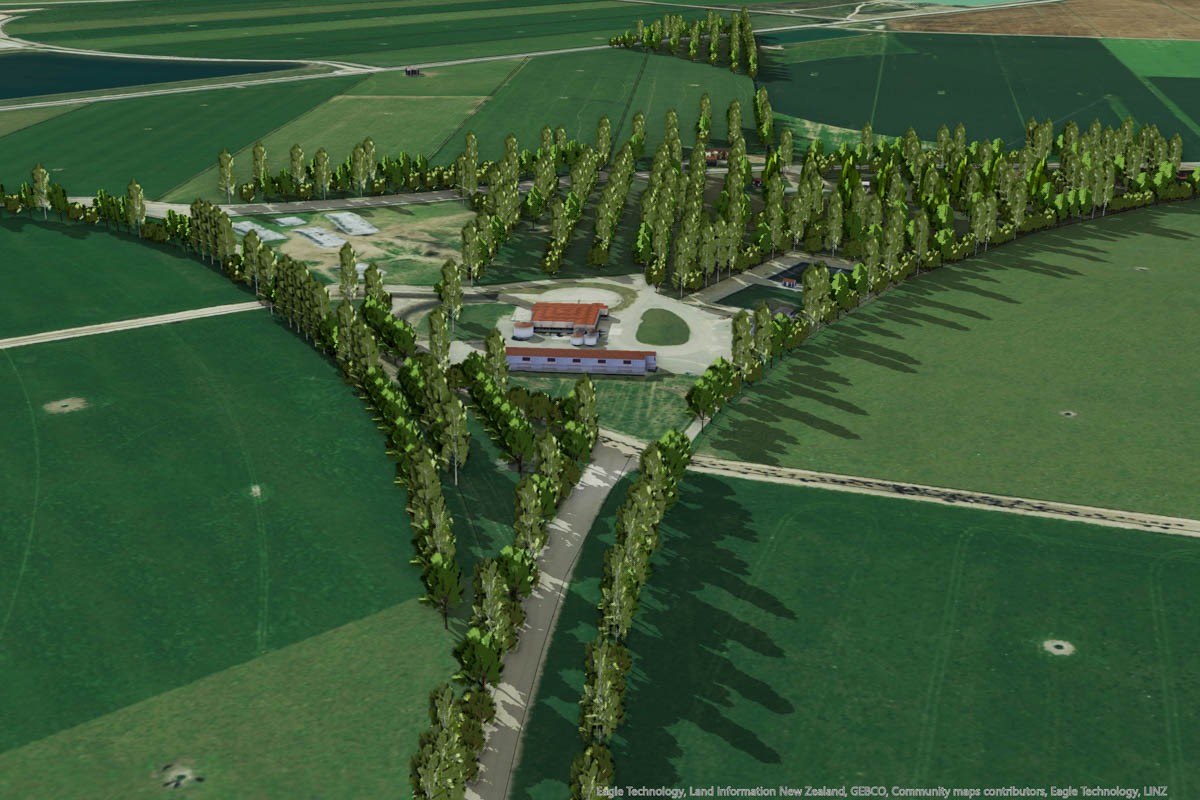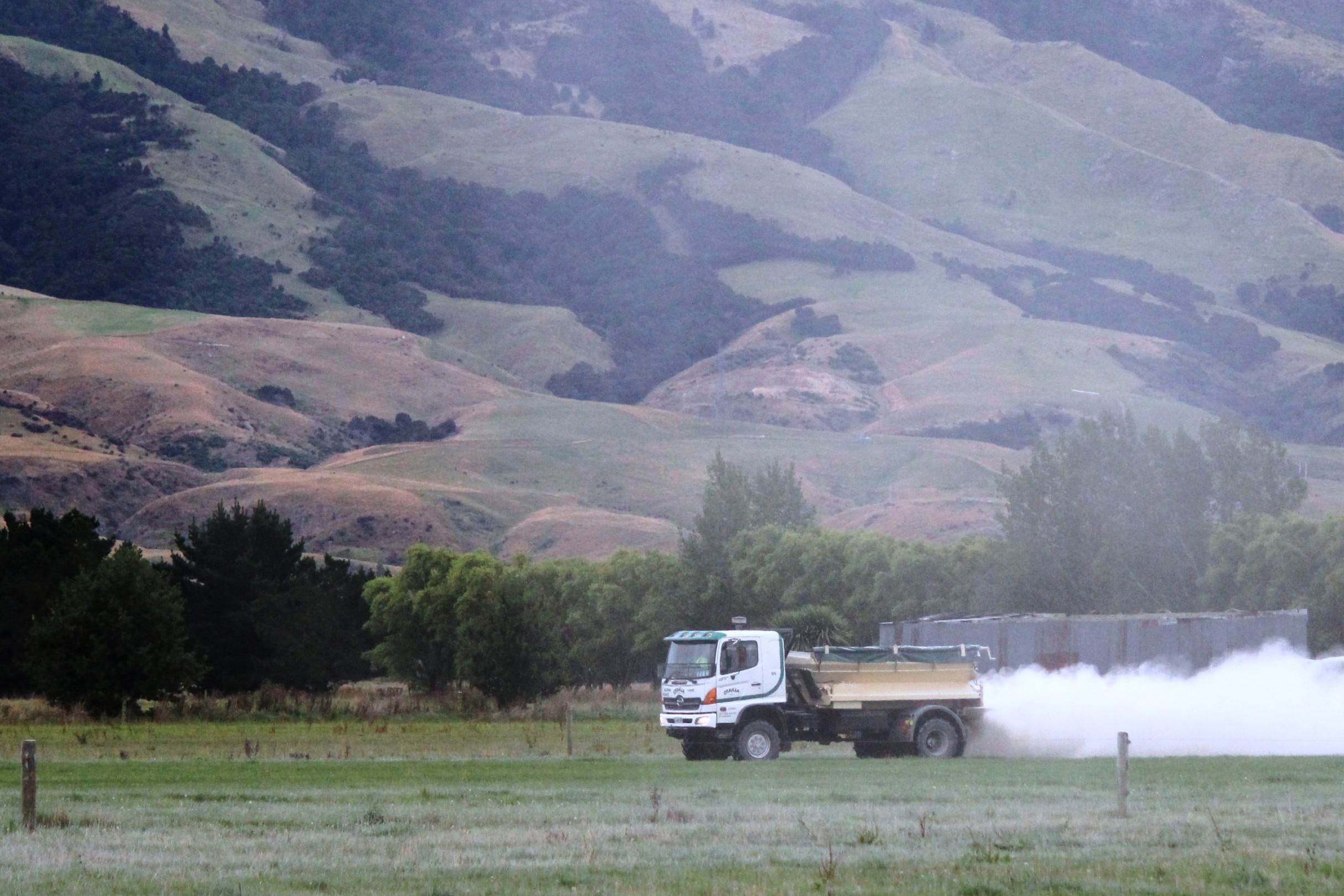For one Southland couple, regenerative farming is about trialing new things, and although they hope many will work, they know some will fail. Story and photos by Karen Trebilcock.

Seed heads are already forming on the pasture, almost a metre high in places, although the gate was only shut a month ago. While they’re ripening in the heat of the Northern Southland sun, below, at ground level, it is shady, cool and moist – the way their roots like to be.
The myriad species, grasses and legumes, would take an avid agronomist a while to identify but the cows will enjoy them all in a month’s time.
The standing hay paddock, or deferred grazing, whatever you want to call it, is yet another trial on Dylan and Sheree Ditchfield’s 410-cow dairy farm.
It will be break-fed when the farm starts to dry out in summer to extend the round, acting as a summer crop, but also as a reseeding programme.
The plan is the cows will be break-fed it as night breaks, eating what they can and trampling the rest including the mature seed heads to hopefully result in a naturally regrassed paddock.
Dylan and Sheree, who have owned the farm near Waikaia since 2002, said regenerative farming is about trialling new things such as the standing hay, and although they hope many will work, they know some will fail.
One that is not failing is their winter bale grazing.
It won them Environment Southland’s environment leadership in farming award in November with the judges saying the couple were “inspirational and real leaders in the farming sector, with their whole philosophy and approach of people being at the core of their operation”.
“This approach is good for the cows, good for the soil, good for the water and good for the people.”
But it has attracted more than awards. Environment Southland also got in touch with AgResearch about it and this winter will be the last of three where cows on kale and the bale feeding will be monitored on the farm and the results compared.
AgResearch senior scientist Ross Monaghan, based at Invermay, is already finding lower nitrogen concentrations in drainage from the bale-grazed areas compared with conventionally fed kale, as well as less soil damage such as pugging and less risk of soil loss.
Pasture recovery and nitrogen uptake in the bale grazing paddock was also rapid following wintering with it grazed three times and topped before summer this season.
Cows fitted with collars and pedometers showed those in the bale wintering system walked less, were more settled, ruminated more and lay down more than those on kale.
It’s thought because of the lower-quality feed, the cows had to ruminate more but this created body heat and what was left of the bales gave them dry and warm places to lie.
Blood tests are expected to show lower cortisol levels, the stress hormone.
In the trial, 100 cows were offered half a hectare every three days break-fenced mostly into square areas.
The grass was at 3500 to 4000kg drymatter (DM)/ha cover and the hay bales were set out on their round side in a grid formation with 30 bales per hectare about 18 to 20 metres apart. Portable water troughs were moved with the cows.
The same paddock has been used for the trial each year with the bales set in different positions each time.
No rings are used and the wrapping is removed before the cows are let on to the break.
The cows eat about 80% of the bale and the rest is left and usually used to lie on.
If the weather turned wet, cows were moved to the next break before the three days were finished and returned if needed when the weather improved, which Dylan said happened about 10% to 15% of the time last winter.
“We try to target the heavier soils when the weather is better. The idea is to damage the paddock the least as possible.”
Cows on both the bale system and kale achieved about half a body condition score during the winter with the bale system slighter better than the kale last winter.
The Ditchfields are now converts and especially like how no cultivation is required to plant winter crops and the soil is never bare after wintering.
“We used to winter on fodder beet and then we became concerned about the impacts on the soil, the soil compaction that happened, so we changed to kale but we still weren’t happy,” Dylan said.
“We were looking for different ways of doing things on the farm, not just wintering, and that’s when we came across regenerative farming.”
They saw Mark and Madeline Anderson trial bale wintering on their Clinton dairy farm and decided to give it a go.
“We’d farmed conventionally for a very long time and this was a whole new approach,” Sheree said.
Dylan now facilitates a regenerative farming discussion group for beef, sheep and dairy farmers in Southland and Otago.
“We started out in the autumn of 2020 with about 15 people and we’ve grown to about 50, meeting about five or six times a year,” Dylan said.
“We’re all trialling different things on our farms and sharing the results so the burden is not all on one farm. Because we expect some of these trials to fail. You have got to have failure to learn.
“What’s really good about it is, it’s farmer-to-farmer so there is some really robust discussion and debate. It’s authentic,” Sheree said.
The Ditchfields have also lowered their nitrogen inputs, to 37kg N/ha/year and reduced cow numbers from 520 to their current 400.
The result has been instead of the 10-year average of 15 tonnes DM/annum grown, they’ve only grown 11.5t during each of the past two seasons although Dylan said growth rates in the whole valley have been down due to recent cold, wet springs and dry summers.
This year though, things are looking better. Concentrating on their soil pH, which is now back up in the mid-sixes after applying lime, magnesium, elemental sulphur and boron, they’ve put 140t of silage in the pit before Christmas, compared to only making 180 bales for the two seasons before.
They’re also using a mix of molasses, fish and kelp fertilisers among other things to feed and increase the biology life in the soil.
This is all part of the transition from a plant-feeding chemical system to a soil feeding biological system, they said.
“It feels like it’s thriving. When you walk in a paddock it’s starting to feel soft like a mattress, not compact and dead,” Dylan said.
Milk production didn’t drop the corresponding amount to feed not grown in the past two years and last season sat at a respectable 172,000kg milksolids (MS), or 420kg MS/cow and 1088kg MS/hectare on the 158ha milking platform.
Although 65% of the farm is still a traditional perennial ryegrass and white clover mix, the other 35% is up to 34 cultivars including oats, cocksfoot, prairie grass, timothy, fescues, a variety of clovers and other legumes such as vetch along with plantain and chicory.
Learning how to get the best out of the mixed swards, as well as make hay, has kept the Ditchfields and their staff always learning.
“Making hay wasn’t something we’d really done. We’re thinking of getting our own baler so we can make smaller amounts when we can instead of having so many paddocks out of the round at once,” Dylan said.
“It can take only three days to get it dry but that is the minimum when the weather is perfect. Usually it’s four to five days.”
He said bale grazing can be done using balage, but there is more plastic to deal with plus the fermenting process can destroy any of the seed captured in the bale.
“You want that seed in the bale litter to regrow the area in the paddock where the litter is. If it doesn’t it can become anaerobic and then there is nothing there to take up the nutrients.
“I have been trying this year to sprinkle on a handful of seed where there is nothing growing and it seems to be working.
“But what is really great is the cows are happy. Not like when they were on the fodder beet or even the kale.
“The hay especially can be quite alow in protein, and the grass can be a little rank if you come out of a dry autumn but the cows are settled and they’re putting on weight through the winter.
“We calve on the bales as well and there is very little calf mortality and we’re seeing better cow health.”
Sheree has noticed their Milk Urea Nitrogen test slowing going down on the docket after adding free-choice hay to the milkers.
“We’re at least 10 points down on last year, however this could be seasonal.
“All the time we’re observing, changing something, and then testing to see the result,” she said.
Dylan said there were a variety of ways to do bale grazing but the important part was to leave enough cover on the paddocks afterwards (live roots in the soil) for the grass to use the nutrients left behind by the cows.
“Bale grazing is not when the soil is trashed and you have to resow the whole paddock.”
And the staff now enjoy the winters just as much as the cows.
“They’re all really engaged in the process. We’re all in it together learning. It’s very liberating.”





